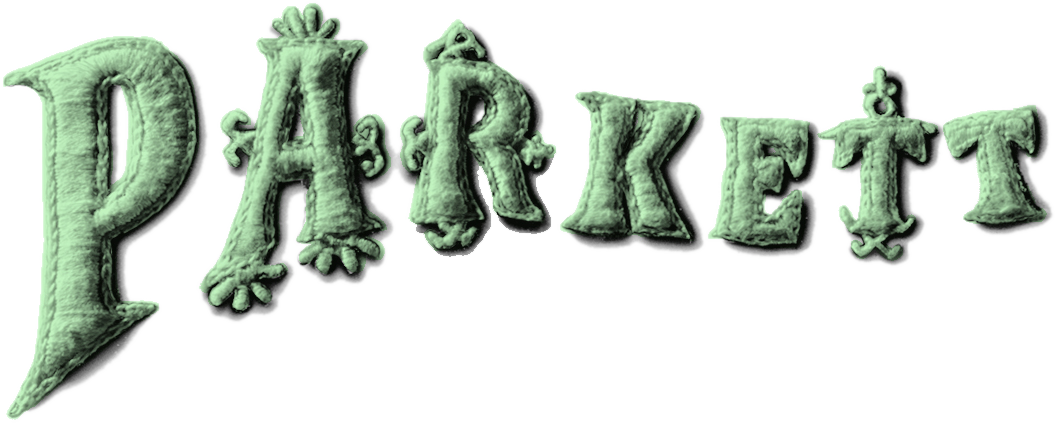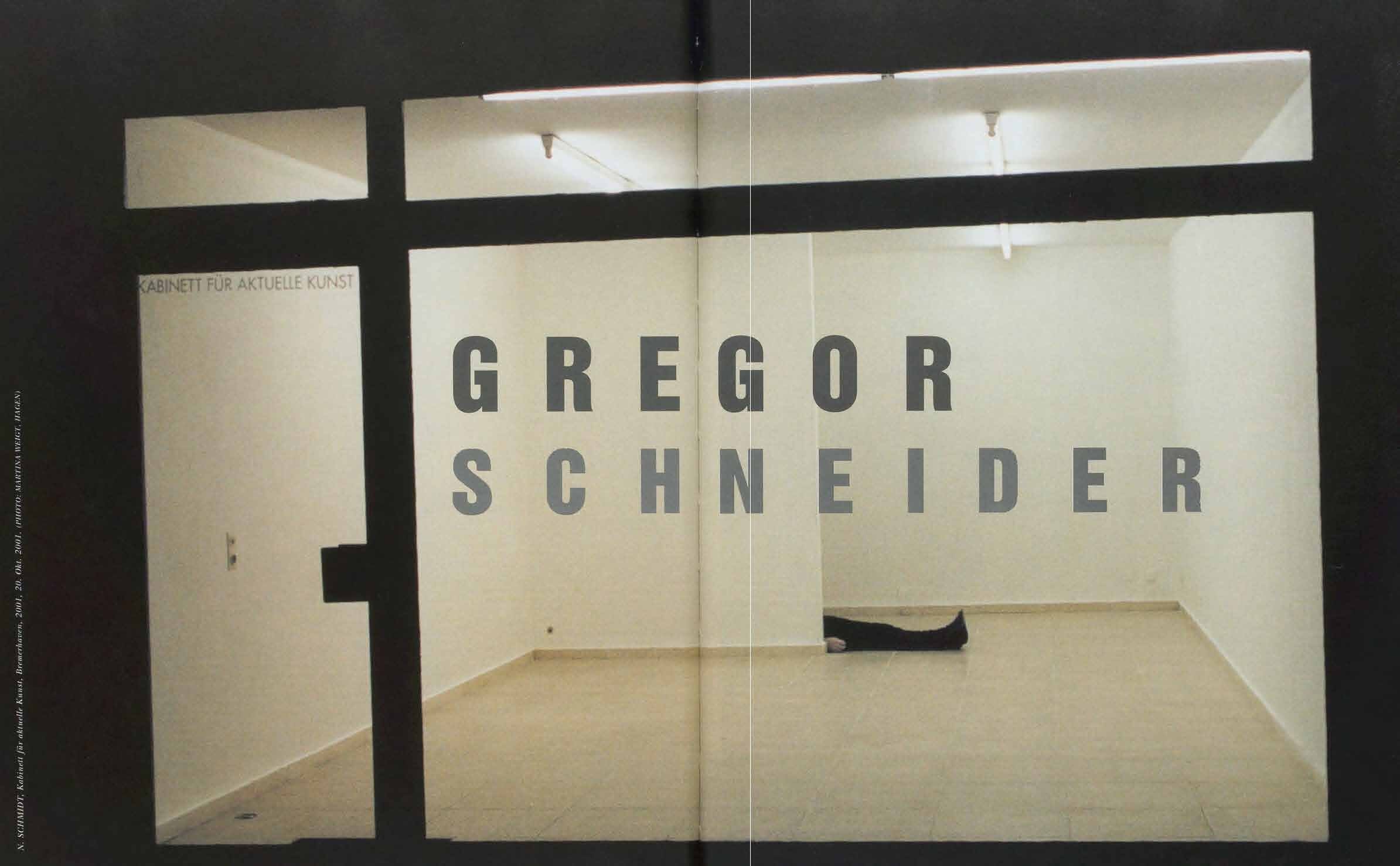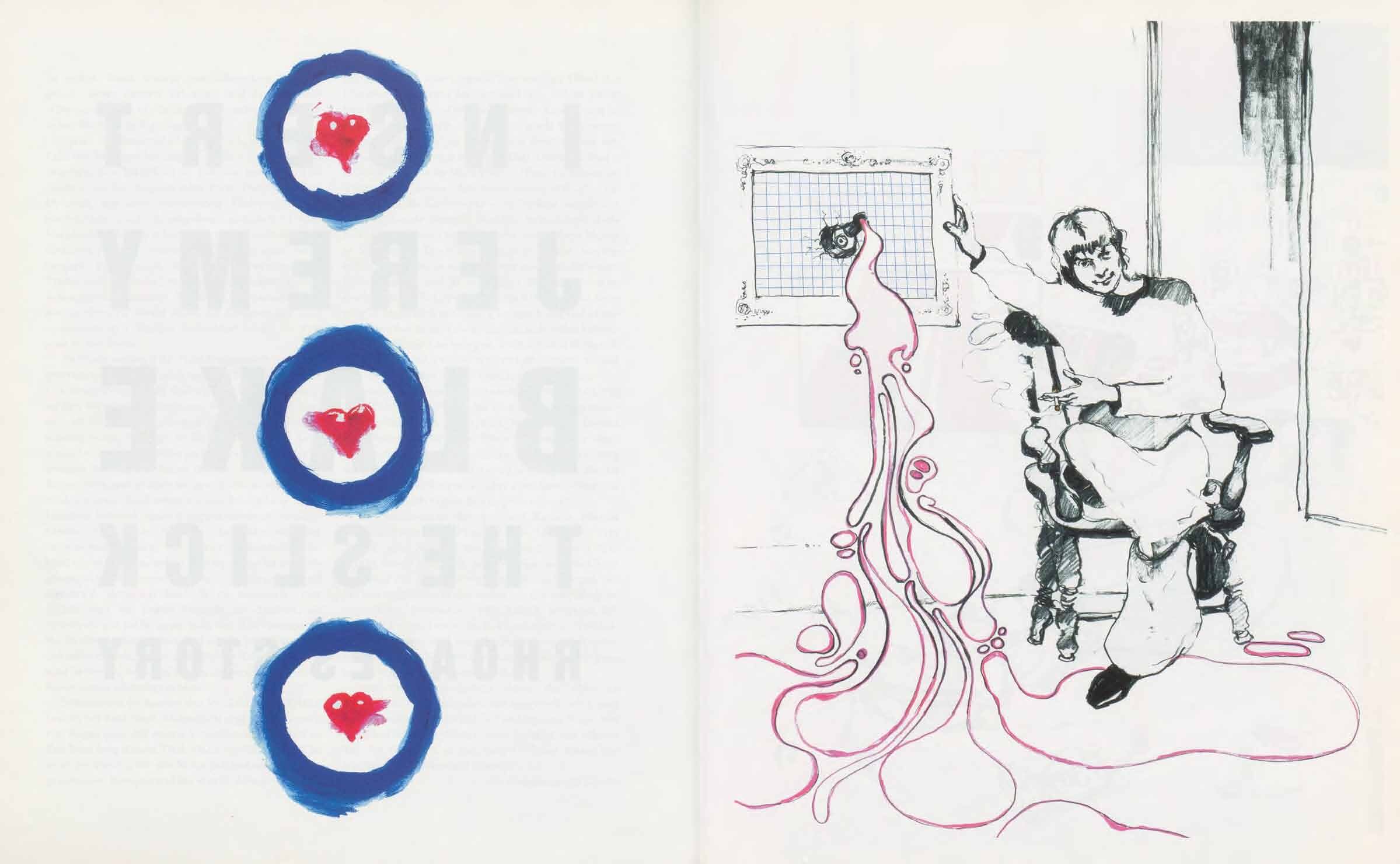 Image 1 of
Image 1 of


Parkett Vol. 63 - 2001 | Tracey Emin, William Kentridge, Gregor Schneider
Tracey Emin
Read a selected text (PDF)
View edition
William Kentridge
Read a selected text (PDF)
View edition
Gregor Schneider
Read a selected text (PDF)
View edition
Insert Jeremy Blake (PDF)
Spine Francis Alÿs
Cumulus:
Exhibition review ‘Mirroring Evil’ at the Jewish Museum by Olav Westphalen (PDF)
Five Shows in the Portikus by Daniel Birnbaum (PDF)
Miscellaneous:
Fabrice Gygi by Claudia Spinelli (PDF)
U.S. & Canada
Please place your order through our distributor D.A.P. here.
Tracey Emin
Read a selected text (PDF)
View edition
William Kentridge
Read a selected text (PDF)
View edition
Gregor Schneider
Read a selected text (PDF)
View edition
Insert Jeremy Blake (PDF)
Spine Francis Alÿs
Cumulus:
Exhibition review ‘Mirroring Evil’ at the Jewish Museum by Olav Westphalen (PDF)
Five Shows in the Portikus by Daniel Birnbaum (PDF)
Miscellaneous:
Fabrice Gygi by Claudia Spinelli (PDF)
U.S. & Canada
Please place your order through our distributor D.A.P. here.
Tracey Emin
Read a selected text (PDF)
View edition
William Kentridge
Read a selected text (PDF)
View edition
Gregor Schneider
Read a selected text (PDF)
View edition
Insert Jeremy Blake (PDF)
Spine Francis Alÿs
Cumulus:
Exhibition review ‘Mirroring Evil’ at the Jewish Museum by Olav Westphalen (PDF)
Five Shows in the Portikus by Daniel Birnbaum (PDF)
Miscellaneous:
Fabrice Gygi by Claudia Spinelli (PDF)
U.S. & Canada
Please place your order through our distributor D.A.P. here.
Browse Selected Texts and more on the Collaboration Artists
Artist Insert
Editorial
The cover of this edition of Parkett plays with the pull of introspection. Metaphorically it refers to the art of Tracey Emin, William Kentridge, and Gregor Schneider. Substantial points of convergence are revealed on closer study despite oeuvres that are profoundly dissimilar in approach, provenance, character, and visual idiom. These works direct their attention to elementary concerns: human beings in isolation, surrounded by walls, often naked; the bathroom, the bed, habitation. Also in this issue an Insert by Jeremy Blake.
An “unremittingly ordinary” atmosphere (to use Ulrich Loock’s description of Gregor Schneider’s rooms) prevails in these artists’ manifestations of unheroic, battered lives, exposed to a diversity of forces.
One might mention the autobiographical tendencies, the propensity for gloominess, the aporia. A sense of trauma seems to be associated with their introspection and retrospection. The more time one spends with these works, the more they feed premonitions and lend the unspoken a palpable presence in space. Their stories bear witness to wretchedness and oppression, to rape and abuse.
Their contours trace the flip side of history, stories of habitation for souls without rest.
South Africa is the background against which William Kentridge creates his complex works and drawings that lead to animated films, videos, and theater productions. As Susan Stewart so impressively puts it, this artist brings to light "truths … that have remained in every sense obscene, hidden form view."
From Ulrich Loock’s discerning essay we learn how Gregor Schneider manages to produce the unknown by ceaselessly building onto, or rather into his house, adding layers, while pushing others into the background and abandoning them to the past as hidden unknowns. Loock comes to the conclusion that “the uncanny is not the straightforward Other, it is anything of one’s own, rendered inaccessible and unidentifiable.”
This tension between a so-called fixed idea and the impossibility of fixation also marks Tracey Emin’s works. Emin may seem communicative to the extreme, yet her oeuvre makes us acutely aware of the inadequacy and precariousness of channels of communication. One is moved by her works precisely because of their painstakingly balanced form. They are compelling due to a detached stand in which pen and ink drawings end up as mere monotypes on paper, while conversely, the handwritten note converted into neon becomes vociferous proclamation.
All three artists emphasize the personal through handcrafted work, which is set off against found, existing objects. Old black telephones, outdated office equipment, and drilling derricks in Kentridge’s work and HAUS UR in Gregor Schneider’s stand for life before birth. The anonymous might of the mass media operates for Tracey Emin like an ineradicable, relentlessly distorting mirror, and when she sends signals resembling Edward Munch’s SCREAM via talkshow scandals, she can observe its monstrous amplification from afar. In William Kentridge’s edition for Parkett the role of the mirror is reversed, for the head of Medusa, made unrecognizable by anamorphosis, can only be seen properly in a reflecting cylinder.
Table of Content
Fabrice Gygi – Reports from the Battle Zone by Claudia Spinelli
Tracey Emin
Just Be Yourself and Wear A Low Top by Lynn Barber
Like a Hole in the Head by Gregor Muir
Artist over–and in–the Broadsheets by Robert Preece
William Kentridge
Doubled Vision – Peering through Kentridge’s Stereoscope by Tom Gunning
A Messenger by Susan Stewart
Live Cinema & Life in South Afrca by RoseLee Goldberg & William Kentridge
Gregor Schneider
Negative Spacial Sculpture by Renate Puvogel
The Dead House ur by Ulrich Look
Jeremy Blake, Insert
Katharina Grosse – Painting: A Game of Relations by Rainer Fuchs
The Text Is a Work of Art – The Three by Adrian Dannatt
Method Masking, Cumulus from America by Christian Rattemeyer
From the White Cube to Super Houston, Five Shows in the Portikus, Cumulus from Europe by Daniel Birnbaum
Robert Powell – Drawing a Visual Anthropolgy by Michael Oppitz
Some Artworks Revisited after September 11, 2001 by Bice Curiger




